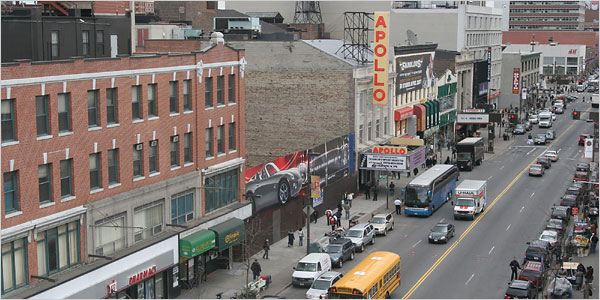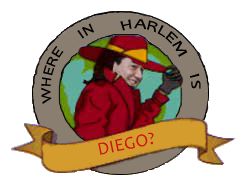125th StreetFrom The Peopling of New York City: HarlemOverviewThe commercial epicenter of Harlem, 125th Street has been hard-hit by Gentrification, with the obvious effects of having more chain stores pop up such as CVS/Pharmacy and MAC Cosmetics as well as H&M and Old Navy. On other streets in Harlem, there are more small business owned and operated by the people in the community, but on 125th Street, the business of Harlem has been bought out. What does the gentrification mean for the neighborhood? A loss of the connection between the store-owners and the customers; no longer is there a neighborhood deli where everyone buys lunch, it's now a McDonalds.
MHC Lehman's Harlem AdventureHarlem. “How many of you guys have been here before?” asked the tour guide. Very few hands were raised. Before our virgin visit, Harlem was only known to us by second hand accounts; a place we knew existed but only through a personified window: the media. Tainted and distorted, the reputation of the uptown community went frozen in time unnoticed, like surveillance footage secretly put on replay; in effect, aliens to the district do not know whether to expect the historical culture fest captured in 90 year old recordings or the socio-economical decadence indifferently imposed by customary custodians of crack cocaine and their gang-related affiliates from the days of the Warriors and Shaft. Turns out today’s Harlem is neither here nor there. The foundation of the Success Charter Network gave way to over 40 academically rigorous charter schools including the Harlem Success Academy; education has been flourishing. According to our guide, crime has dropped 60% since former Mayor Giuliani handed over the decaying property to developers. The introduction of million dollar condominiums, Starbucks, lounges, and other pop culture trends have been so effective in the community’s face lift that the city felt it necessary to provide it with a new calling card, something less stigmatically Dutch and little more English: SoHa. The uptown cultural pool had been polluted by crime, so the city changed the water. The amorous will find relief in part of Harlem’s elegant turn of the century architecture rescue effort, a 4 dimensional museum of sorts fortunately guaranteed preservation thanks to the efforts of the New York Historical Society. In these times, however, it is difficult to find fiscal support for the arts and as a result, it continues to bleed out of the city in parts, like Harlem, that played a crucial role in its altruistic development. It is a pity to see a homogeneous consumer agenda in the ongoing reconstruction of the area. The Harlem our class saw was not the Harlem of an American West African Immigrant, it was not crime city, and it was not an artistic hot house. Harlem today is the townhouses of yesterday sold for millions of dollars. A place for wineries, Dunkin’ Donuts, and stubbornly held Kennedy Fried Chicken, of mosques with aggressive caretakers that shout “no trespassing” to youthful academics, and theaters hardly attended. The uptown community is pulled extraneously by time, scraping its inhabitants along the way, leaving behind the evicted poor, gentrified condos, and a promise for change without morality. - Davi
Ray Llanos is a free-lance photographer. He is based in Harlem and has worked with the Studio Museum in 125th St. and other institutions and organizations in Harlem.
|


